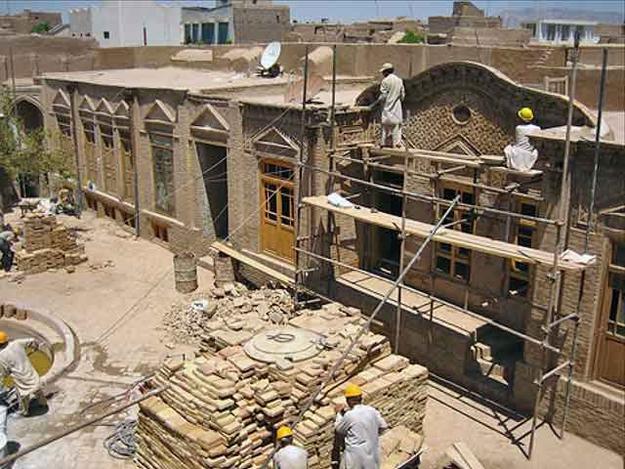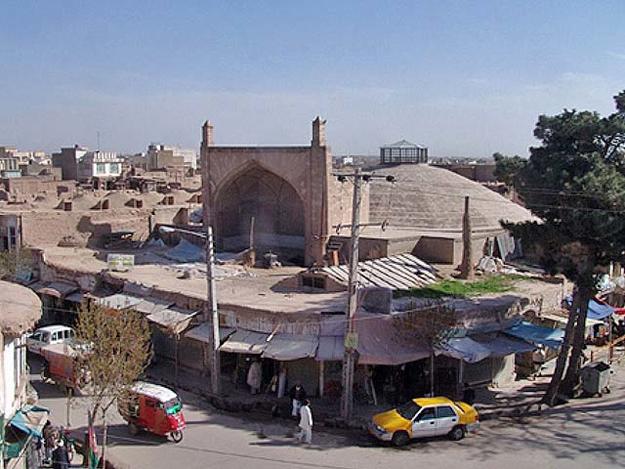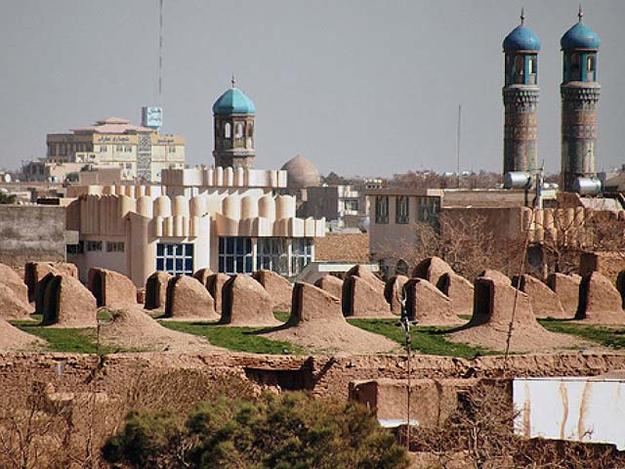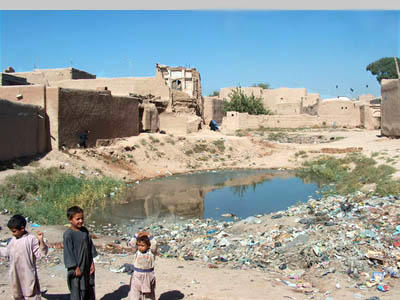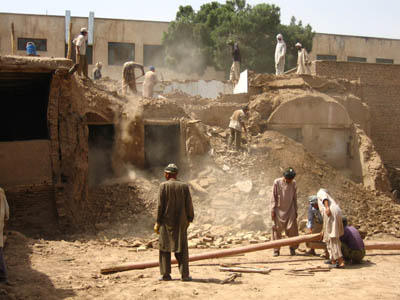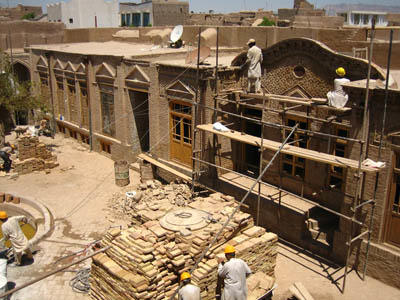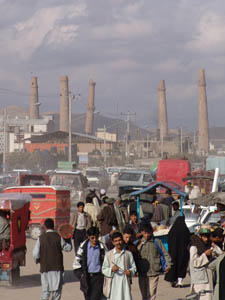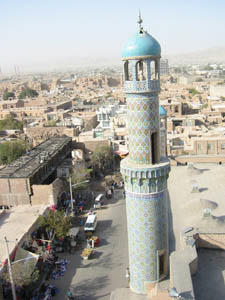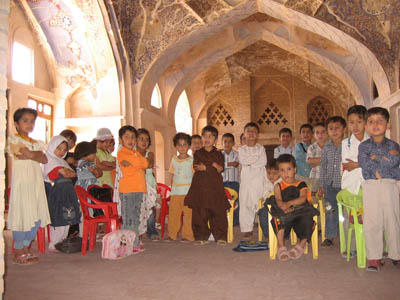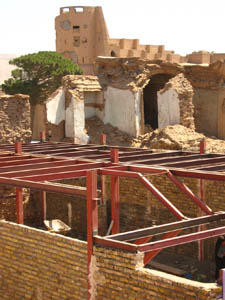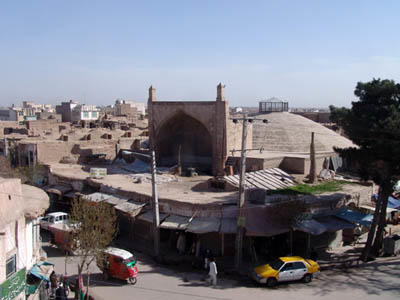The Old City of Herat in Western Afghanistan has a long history of rebuilding and restoration. The city was destroyed twice by the Mongols, in 1221 A.D. and 1383 A.D., and was reconstructed as the capital of the Central Asia’s Timurid Empire in the fifteenth century. Before Genghis Khan arrived and left his mark on the city, Alexander the Great occupied Herat in 330 B.C., bringing Greek influences to the city. Herat’s long list of conquerors and occupants had much to do with its desirable position along the Silk Road between Europe and Asia.
The architecture of Old Herat exhibits vestiges of each of those past styles, but at its heart it is a traditional Islamic urban center. Herat’s citadel, Qala Ikhtyaruddin, and famous Friday mosque, Masjid Jame, adorned with bright blue minarets, were used as models for public buildings in other Islamic cities. Although the earthen defensive walls originally enclosing the city are gone, the layout and much of the historic fabric survived intact until 1978. In recent decades, Herat has endured military conflict, development pressures, looting, and earthquakes.
Because many of the structures, including the famous citadel, were built from mud brick, they are particularly vulnerable to erosion if routine maintenance is not performed regularly.
1998 and 2010 World Mouments Watch
The Old City of Herat was placed on the World Monuments Watch in 1998, a group of international nonprofit groups joined together to create a long-term plan for responsible development and preservation at Herat, but the project could not be mobilized effectively at the time. More recently, the Aga Khan Trust for Culture has led a new campaign to curb insensitive construction and demolition of significant structures in Herat. The Trust developed plans for several historic districts in Afghanistan and mapped the historic buildings in the city, working with government agencies, including the Department of Culture and the Department of Urban Development, to preserve them. The Aga Khan Trust for Culture aims to implement pilot conservation projects and expand from those to stabilize and maintain the city.

